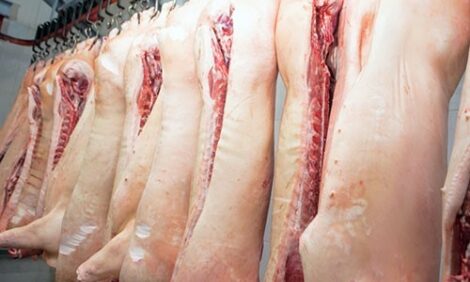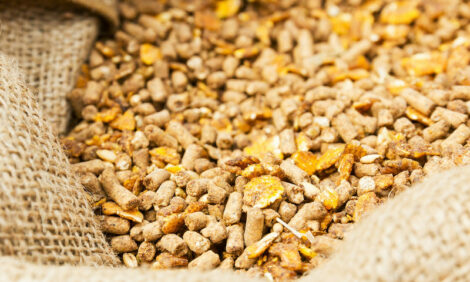



CME: Hog Slaughter Surge Has Put Pressure on Prices
US - The surge in US hog slaughter numbers has put dramatic pressure on pork prices, write Steve Meyer and Len Steiner.The composite pork cutout was
quoted on Monday afternoon at $77.79 /cwt, down some $18.1/cwt
or 19% from a year ago. Some may argue that comparing to last
year may not be quite fair given the 2011 surge in exports to China
and the resulting boost to domestic prices. But even if we compare
to 2010, the pork cutout still is some 15% lower, reflecting dramatic
declines across most product groups. Indeed, the only product that
remains above year ago levels are bellies, with the belly cutout 4%
higher than what it was last year. Loins are down 24%, pork butts
are down 19%, ribs down 14%, picnics are down some 38% and
hams, an item that should seasonally be carrying the cutout at this
time of year, is down some 24% from last year.. One item that does
not show up in primal values but that impacts many of them is the
value of pork trim. The price of 72CL pork trimmings was last
quoted by USDA at $51 /cwt, almost 50% lower than where it was
priced in early August. Again, part of the reason for the softer pork
trim values is due to the reduction in US pork shipments to China.
Last year, US packers shipped a large number of hog carcasses to
the Chinese market, which had the effect of reducing the supply of
trim available in the marketplace. This year, export markets appear to have returned to their normal trend levels. Furthermore,
the surge in hog carcass weights during August and early September also put some additional trim in the market.
As we have noted before in this report, we think that producers have been quite aggressive in marketing hogs following the
spike in feed costs and this has started to pull supplies forward.
Last week USDA pegged weekly hog slaughter at 2.428 million
head, the third largest weekly hog slaughter on record. The other
two weeks with larger hog slaughter numbers were in December
2007 and January 2008. Absorbing this kind of supply increase in early September is unprecedented and it has
clearly unsettled raw material markets. One indication that
producers are pulling hogs forward is that the seasonal increase in
hog weights has slowed down. Given that producers are scheduled
to slaughter over 2.2 million hogs each week, pulling forward 100,
200 or 300 hundred thousand hogs does not dramatically reverse
weight gains, at best it helps slow the seasonal weight gain down.
The weekly USDA estimates of weights are broad estimates that
normally get revised two weeks down the road. For a more up-todate measuring stick, we like to look at the actual hog weights reported under the mandatory price reporting system (report LM_HG201). The seven day average of MPR reported carcass
weights currently stands at 202.5 pounds, 0.2 pounds or 0.1%
below year ago levels. Four weeks ago, weights were running
about 2.2 pounds or 1.1% over last year. Another factor that
could impact weights into the fall is the quality of corn. By all
accounts, this year’s corn crop is of worse quality than it was in
2011 and hog performance tends to suffer when feed quality deteriorates. For the moment, pork markets are struggling to absorb the surge in marketings. But as marketings return to more
normal levels later in the fall and hog weight gains slow down,
pork supplies should normalize... somewhat.









